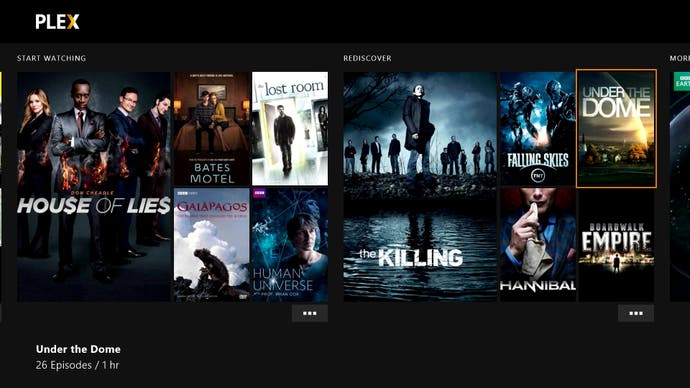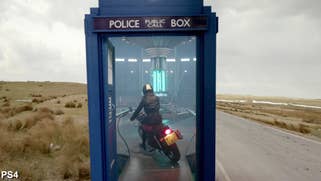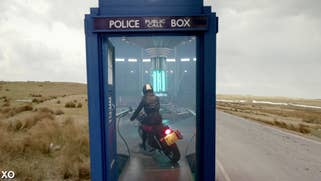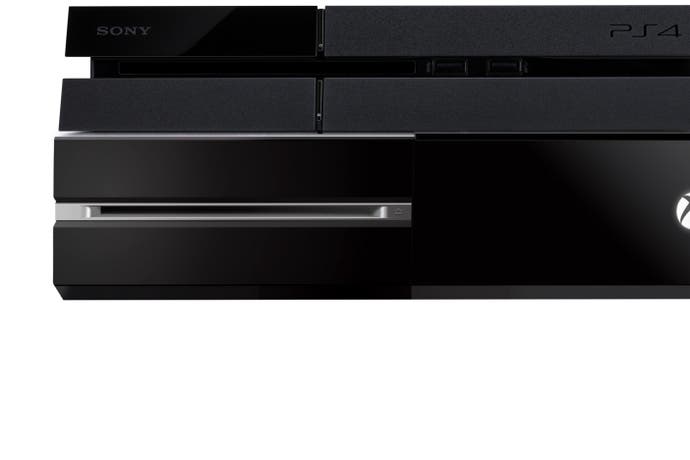Which is the better media player? PlayStation 4 and Xbox One revisited
Digital Foundry re-assesses multimedia functionality and performance.
Ten months ago, we tested the media playback functions of the Xbox One and PlayStation 4 extensively, using the feature-set and the quality of the veteran PS3 as the standard. Our verdict? PlayStation 4 passed muster, albeit with a few serious issues on specific applications, while Xbox One was close to an abject failure owing to fundamental deficiencies across the whole media offering. But in truth, neither of the new consoles could supplant the PlayStation 3 as the media centre of choice. Ten months on, has anything changed?
A quick heads-up before we continue: a lot of this article is going to centre on the Xbox One experience, as it's fair to say that Microsoft has rolled out an impressive range of significant upgrades in the intervening months. The console was designed from the ground-up as a gaming multimedia centre, which made its poor performance in our last test all the more disappointing. However, things have changed. The plain and simple fact is that those upgrades have paid off - Xbox One still has some minor issues, but in the here and now there is no competition: the Microsoft media offering works and the OS integration is impressive, if a little inconsistent. Perhaps the real question now is just how relevant that is in an era where media playback apps proliferate across a multitude of devices.
But let's begin by addressing the major gripes we had with Xbox One back in February: Netflix was virtually unwatchable owing to hideous skipping, BBC iPlayer was conspicuous by its absence, while Xbox 360 upgraders might have been dismayed to find that the new console lacked the Sky Go functionality of its older counterpart. On top of that, Blu-ray 24fps playback didn't work properly and 3D functionality was absent. Meanwhile, TV integration in European territories was ruined by the console steadfastly sticking to a 60Hz output, producing horrible judder owing to a lack of support for our native 50Hz content. And let's not forget that the OneGuide didn't work at all outside of the USA, while those of us who don't want to give Rupert Murdoch or Richard Branson a monthly ransom for TV services were left with no TV integration at all - unless we went out and bought a set-top box for terrestrial digital transmission.
How things have changed: Netflix works fine now, BBC iPlayer has arrived (with excellent voice support by the way), and while Sky Go still isn't available, at least there's the sister service - Now TV. Things have improved radically elsewhere: the Blu-ray player supports 24fps, 25fps, 30fps and 3D content, seamlessly switching between display modes for judder-free playback. Xbox One also treats 50Hz content effectively - on live TV and Blu-rays at any rate - with the console switching between display refresh rates automatically, just as it should. The lingering disappointment concerns DVD playback - upscaling is still as blurry as ever and that in itself may be a dealbreaker for those with extensive DVD libraries. More positively, in the UK at least, the OneGuide now works effectively, and Microsoft has even released a £25 USB digital tuner for those of us in Europe without set-top boxes - and it's excellent.
Simply plug it in to the Xbox One, attach your antenna, and after a short set-up period where the console scans for available channels, you're good to go. Standard def and HD channels are supported, as is surround sound. Smart Glass integration is pretty decent too, with the ability to stream live TV to your tablet or phone - the quality is pretty poor, but it's serviceable enough.
All of the normal TV functionality works just fine with the dongle, including Snap-based picture-in-picture. It's interesting to note that while gaming is the major focus, Xbox One retains a 60Hz output, causing some judder on the smaller TV picture-in-picture feed - a necessary evil and not unduly intrusive. As soon as you maximise the TV image, the console once again switches to 50Hz. At this point we should point out that picture quality is excellent, with standard definition sources upscaled very effectively. Picture quality actually seemed better than the results of the internal scaler on our HDTV.
There are some minor annoyances though. BBC iPlayer is based on 25fps content, but the app resolutely sticks to a 60Hz output. In this respect it is much like its other iterations for various devices (including PS4), but this is Xbox One and the opportunity was there to do better based on what the surrounding technology is already delivering. The fact that voice support works so well demonstrates that a good degree of effort was already put into the app - 25fps/50Hz support would be the icing on the cake and similar auto-refresh switching would be welcome on all other media streaming services too.

But the Xbox One media enhancements don't end there. In our previous article we bemoaned the lack of local media playback - the implication of its absence being that Microsoft (and indeed Sony) would prefer us to subscribe to content providers (like them, perhaps) rather than allowing us to use our own media. That's a clear functionality downgrade from the last-gen machines. Well, Xbox One's new media player app attempts to sort that out, offering a surprising amount of playback functionality - including the ability to run MKV files.
In our tests, this actually turned out to be somewhat disappointing - high-bitrate 1080p h.264 files stutter horribly, while audio support is limited to AAC and Dolby Digital, with DTS and DTS-HD off the table. Our own in-house 1080p60 MP4s and MKVs - the files we upload to YouTube - drop frames on playback, which isn't ideal. The media player app is probably only good for low bitrate pirate MKVs, and that's somewhat bizarre considering that Xbox One has a hardware h.264 decoder onboard. The startling reality is that the £25 Raspberry Pi offers superior local media decoding than the mighty Xbox One.
However, the Microsoft console does have an ace in the hole: Plex. For those out there with media servers, Plex is the app of choice for organising your collection, with artwork, synopses and even title music downloaded and streamed across from the server to the client. Transcoding is also supported, so while the Xbox One's local media player may not run Blu-ray rips, the Plex server can and does transcode into an acceptable format. Plex is superb (there's voice and gesture control) but at launch, using it required a hefty subscription of $4.99 a month, $39.99 a year, or $149.99 for lifetime access. By the time you read this, that requirement should have been lifted. [UPDATE 20/12/14 1:53pm: Plex is now available for both PS3 and PS4.]










Overall, it's fair to say that the Xbox One media experience has undergone revelatory improvements since we first looked at it in February. However, it remains some way off the revolutionary product it should be, with a variety of minor annoyances that take the sheen off the experience. For example, the inconsistency of support for voice control across apps is disappointing - the core feature-set for the media experience should work everywhere, and it is definitely missed when it doesn't work. The removal of Kinect as mandatory pack-in will almost inevitably result in even less support going forward.
All of which means that Smart Glass, or more likely the standard Xbox One controller, becomes the default interface - both do the job but they are not really as comfortable as a standard remote. That's a £16 optional extra on Xbox One (though there are many third party substitutes) but it remains somewhat surprising that there is still no equivalent for the PlayStation 4. The best you can do there is use the Dual Shock 4, or else hope that your TV supports HDMI-CEC, meaning that your TV remote will work (though we had no luck using Viera-Link on a Panasonic VT20, which works just fine on a Raspberry Pi). To be honest, it's a bit puzzling why the standard PS3 Bluetooth remote remains unsupported - it's out there, it's a good product, why not support it on PS4?
Revisiting the PS4 side of the equation, there's definitely a feeling of a lack of momentum but this is almost certainly by design - Sony has never outright prioritised media in the same way that Microsoft has. That said, Xbox One system software upgrades come thick and fast (perhaps too frequently if you're a member of the preview programme) but core functionality upgrades to the PS4's media player are few and far between. We've seen improvements to the DVD player in firmware 1.61, addressing some of our DVD deinterlacing concerns, while 1.75 introduced stereoscopic 3D Blu-ray support. In short, Sony has a very different approach to Microsoft - it covers off the essentials with competence, reliability and quality but obviously it is not attempting to redefine the media experience. We note that our major issue with PS4 media playback - a horrible LoveFilm (now Amazon Instant Video) performance issue - wasn't a problem during our most recent testing. On top of that, surround sound is now definitely supported from both apps on both consoles. Curiously, it seems that PS4 (and indeed PS3) now enjoy Sky Go and NowTV, which may appeal greatly to subscribers.








Revisiting console media: big improvements but how relevant are they?
Flawed in places, but enormously improved with some really cute functionality, Xbox One is now a completely viable media proposition as a result of the vast improvements made over the last ten months. Our major issue now concerns the quality of DVD upscaling, which remains very, very poor. Bearing in mind that the major advantages of the consoles over streaming boxes is the support for disc media, this remains a surprising oversight. For its part, PlayStation 4 hasn't changed too much but there have been some improvements to functionality. It does what it needs to with the minimum of fuss and a workman-like competence - PS4 makes no pretence about being a media powerhouse. Its core focus is, after all, "#4ThePlayers".
And therein perhaps lies the crux of the matter. Microsoft designed Xbox One in an era where consoles were being used just as much for media playback - if not more - than they were for gaming. Placing so much emphasis on this proved to be a costly error both in terms of initial marketing and hardware design, but the logic at the time was sound. However, the reality is that media playback is now ubiquitous across virtually all devices - streaming from smartphone or tablet to an HDTV is ridiculous easy, assuming your HDTV doesn't already have smart functionality onboard to begin with. Media playback boxes - like the Roku offerings and their subsidised NowTV sibling - offer a higher level of streaming app support than Xbox One, at prices starting from £9.99. In short, Xbox One is a premium level media device in a market now saturated by perfectly functional commodity hardware.
The proliferation of media playback support outside of the console is quickly serving to make the console offerings somewhat surplus to requirements - unless you need a Blu-ray/DVD player of course, where both Xbox One and PS4 offer very similar performance overall. In conclusion, the Microsoft's radical improvement as a media centre is obviously welcome, and we enjoyed using voice and gesture controls, but the bottom line is that access to content trumps this grand vision of the living room of the future. While inexpensive streaming boxes - and indeed in-built Smart TV media hubs - offer access to more TV shows, more movies and a wider variety of content providers in general, both consoles feel somewhat surplus to requirements.






